Volume 37, Issue 1
Displaying 1-12 of 12 articles from this issue
- |<
- <
- 1
- >
- >|
Foreword
-
2022 Volume 37 Issue 1 Pages 5-6
Published: 2022
Released on J-STAGE: September 15, 2022
Download PDF (206K)
Review
-
2022 Volume 37 Issue 1 Pages 7-14
Published: 2022
Released on J-STAGE: September 15, 2022
Download PDF (1609K)
Original Articles
-
2022 Volume 37 Issue 1 Pages 15-19
Published: 2022
Released on J-STAGE: September 15, 2022
Download PDF (441K) -
2022 Volume 37 Issue 1 Pages 20-27
Published: 2022
Released on J-STAGE: September 15, 2022
Download PDF (744K) -
2022 Volume 37 Issue 1 Pages 28-33
Published: 2022
Released on J-STAGE: September 15, 2022
Download PDF (47723K) -
2022 Volume 37 Issue 1 Pages 34-41
Published: 2022
Released on J-STAGE: September 15, 2022
Download PDF (3774K) -
2022 Volume 37 Issue 1 Pages 42-52
Published: 2022
Released on J-STAGE: September 15, 2022
Download PDF (458K)
Case Report
-
2022 Volume 37 Issue 1 Pages 53-59
Published: 2022
Released on J-STAGE: September 15, 2022
Download PDF (11178K)
Clinical Experience or Practice Report
-
2022 Volume 37 Issue 1 Pages 60-65
Published: 2022
Released on J-STAGE: September 15, 2022
Download PDF (765K) -
2022 Volume 37 Issue 1 Pages 66-73
Published: 2022
Released on J-STAGE: September 15, 2022
Download PDF (10214K) -
2022 Volume 37 Issue 1 Pages 74-82
Published: 2022
Released on J-STAGE: September 15, 2022
Download PDF (879K)
Report
-
2022 Volume 37 Issue 1 Pages 83-103
Published: 2022
Released on J-STAGE: September 27, 2023
Download PDF (2038K)
- |<
- <
- 1
- >
- >|
